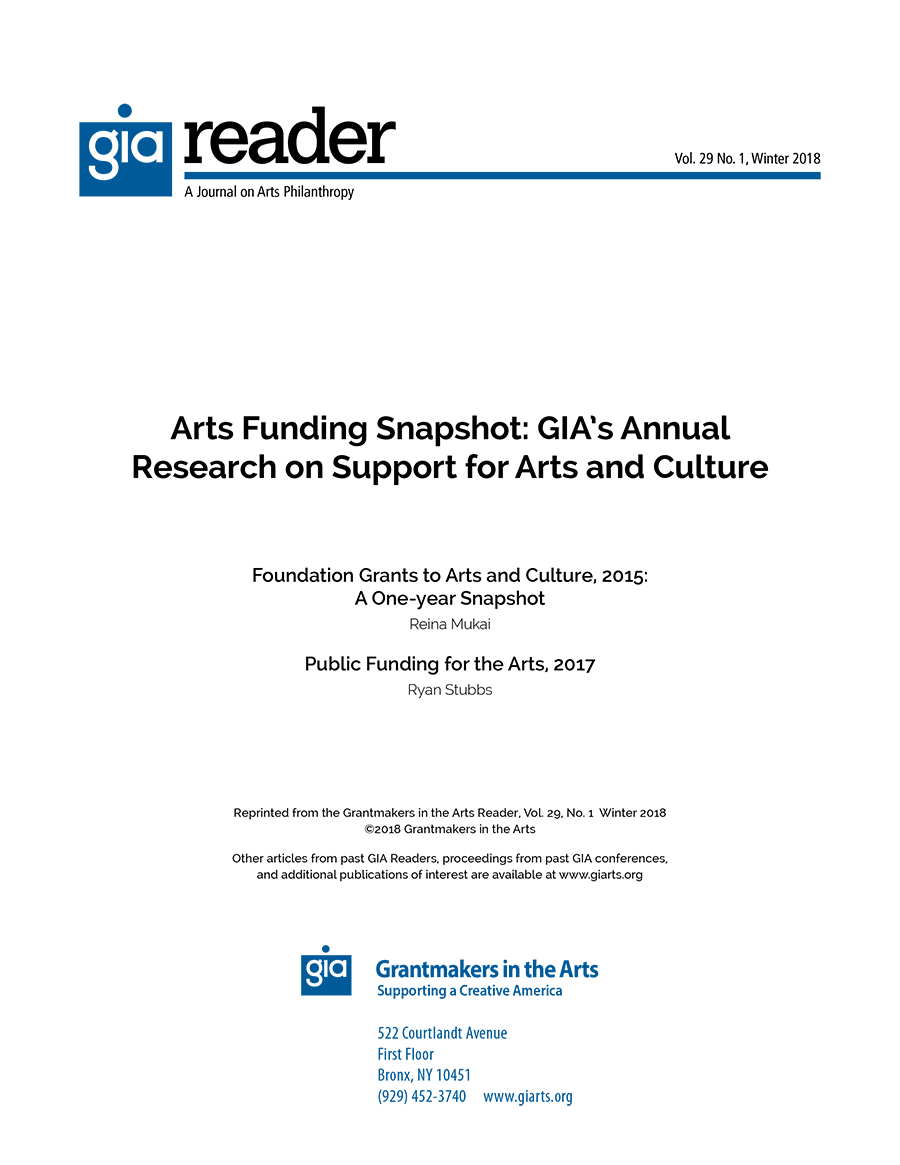Arts Research
Download:
![]() Frequently Un-Asked Questions (1.1Mb)
Frequently Un-Asked Questions (1.1Mb)
A new research center the Institute of American Indian Arts, in Santa Fe, New Mexico, seeks to create will get support from the Andrew W. Mellon Foundation, reported The Associated Press.
Read More...The Mellon Public Scholars Program at the University of California, Davis (UC Davis), which introduces graduate students in the arts, humanities, and social sciences to the intellectual and practical aspects of identifying, addressing, and collaborating with the public through their scholarship, received support for the next three years from the Andrew W. Mellon Foundation.
Read More...SMU announced the merger of its National Center for Arts Research (NCAR), a provider of evidence-based insights on the nonprofit arts and cultural industry, with DataArts, the Philadelphia-based resource for data about U.S. nonprofit arts, culture, and humanities organizations.
Read More...Arts are a key part of our emotional and intellectual life, and they also play a significant role in our economy. A recent report from the Bureau of Economic Analysis (BEA), with support from the National Endowment of the Arts (NEA), found that arts and cultural economic activity in the United States contributed $763.6 billion, in one year.
Read More...In this moment of upheaval, challenge, and resistance for our country, the phrase “speaking truth to power” has taken on a new urgency. Rarely asked amid the fervor pervading the corner offices and Twitter feeds of so many of our foundations and other civic institutions in recent months, however, is an important question: Where does our “truth” come from? How do we make judgments about truth in so subjective a field as arts and culture?
Read More...Download:
![]() Arts Funding Snapshot: GIA’s Annual Research on Support for Arts and Culture (332Kb)
Arts Funding Snapshot: GIA’s Annual Research on Support for Arts and Culture (332Kb)
Download:
![]() Arts Funding at Twenty-Five (318Kb)
Arts Funding at Twenty-Five (318Kb)
Introduction
The easy convenience of typing a few key words into a search box and promptly being immersed in data can make one forget that this capability has existed for a remarkably short period of time. Just twenty-five years ago — a point in time well within the recollection of most members of the arts and culture sector — Stanley N. Katz, then president of the American Council of Learned Societies, observed, “the serious study of arts philanthropy is less than a generation old, and we are just beginning the sorts of data collection and analysis…we need to make sound judgments about the field.”1
Read More...During the past two decades, cultural planning practice in the United States has fallen behind that in parts of the world where cultural plans are required in city general plans, broader definitions of culture have been adopted, more domains of city planning have been integrated, and theoretical debate has progressed further. In the United States there is neither a field of cultural planning nor of cultural planners.
Read More...

